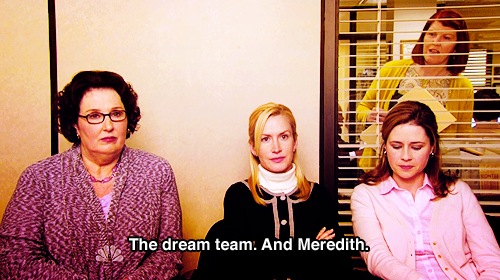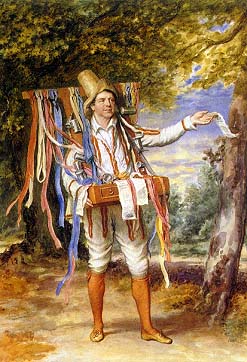1504: Henry VII appoints Richard Pynson king's printer.
Pynson's experience in legal printing, as well as his connections at court, made him well qualified to be king's printer, a post which he held from as early as 6 January 1506, when he first styles himself regius impressor. He had already received several government commissions, including Ordenaunces of Warre in 1492 and, in 1500, Traduction & Mariage of the Princesse, issued in preparation for Prince Arthur's marriage to Katherine of Aragon. Henry VII had created the post of king's printer in 1504 apparently to coincide with the last parliament of his reign. The crown's first appointee, William Faques, printed the statutes for that parliament as well as the first extant printed proclamation, regarding coinage. The earliest opportunity Pynson had, in his official capacity, to print the original edition of the sessional statutes came with the opening parliament of Henry VIII's reign, in 1510. However, it was not until 1512, when Pynson—always the shrewd businessman—secured the exclusive right to print all statutes and proclamations, that the king's printer became the true precursor of HMSO. (Neville-Singleton)1552: Thomas Chaloner's dialogue performed at Epiphany.
After a play or interlude performed at Epiphany (6 January) there was a dialogue, Youth and Riches, which may have been by Ferrers's friend Thomas Chaloner, with whom he collaborated on A Mirror for Magistrates; the dialogue was followed by barriers, masques for men and women, and a banquet. (Wouldhuysen)1579: Henry Denham fails to attend on the Lord Mayor.
On 6 January 1579 he failed to attend before the lord mayor and incurred a fine of 12d., and in August he was fined for arresting a freeman of the company without a licence. However, a 20s. fine in April 1584 for using indecent speech to the upper warden was remitted. (Brewerton)1585: Walter Raleigh knighted.
Although now at the heart of the court, Ralegh remained very much the Devon man. Apart from Aubrey's interesting assertion that Ralegh spoke ‘broad Devonshire’ to his dying day (Brief Lives, 2.182), it is known that the newly established courtier tried in July 1584 to purchase his birthplace, ‘Hayes, a farme sumtyme in my fathers possession’ (Devon RO, MS 2850Z/Z3). This attempt failed, but many of the honours bestowed upon him by the queen had a deliberate regional slant. Knighted on 6 January 1585, he was appointed vice-admiral of the west, lord lieutenant of Cornwall, and, with the death of Francis Russell, second earl of Bedford, lord warden of the stannaries in the same year. He also served as a knight of the shire for Devon in the parliaments of 1584 and 1586. (Nicholls and Williams)1591: Anthony Copley writes for pardon from Elizabeth.
As he admitted on his return to England in 1590, ‘since that time till now … I have served the king of Spaine in his warres in Flanders’ (ibid.). Copley was arrested shortly after his arrival in England, and it was from prison, on 6 January 1591, that he wrote this to William Waad, clerk of the privy council. In the same letter he sought the queen's pardon and employment, swearing loyalty ‘to my prince and country’ (ibid.). He proved his loyalty in a series of letters detailing the whereabouts and activities of English Catholic fugitives and the unscrupulous, harsh conduct of his former patron, Parma. (Graves)1592: Thomas Dempsey disinherited.
While Dempster was receiving this early education, his family became embroiled in an internal feud. This was caused by James, his eldest brother, marrying his father's mistress, Isabella Gordon, for which his father disinherited him. James sought revenge by gathering some Gordon associates and attacking his father as he rode about his business one morning. In the resultant battle several men on both sides were killed, and James Dempster fled Scotland. That he was disinherited is confirmed by a charter of 6 January 1592, which gives the barony of Muiresk to the elder Dempster's second son, Robert. (Toit)1604: James I appoints Henry Howard constable and lord warden.
On 6 January 1604 Howard was made constable of Dover Castle and lord warden of the Cinque Ports—positions which he held to his death. (Croft)1618: Ben Jonson's Pleasure Reconciled to Virtue performed before James.
Crane's earliest surviving dramatic transcript, the unique copy of Ben Jonson's Pleasure Reconciled to Virtue (Chatsworth House, Chatsworth MSS), performed before King James on 6 January 1618, need not indicate a formal connection with the King's Company rather than the playwright. (Howard-Hill)1631: Sir John Oldcastle performed at court.
Consequently, Sir John Oldcastle has for some time attracted great attention, not only because it is the sole extant play in which Hathway had a hand, but because it has become part of the Shakespeare apocrypha. Theatre historians commonly agree that Oldcastle influenced Shakespeare's Henry IV, parts 1 and 2, and Henry V (Corbin and Sedge, 9–12). Moreover, there are two recorded court performances of Oldcastle by the King's Men, the playing company in which Shakespeare was earlier an actor and shareholder. These were preserved in the office book kept by the master of the revels, Sir Henry Herbert, in entries for 6 January 1631 and 29 May 1638 (Bentley, 1.96, 99). (Cerasano)1647: Stationers' Company raids Richard Overton's house for Leveller pamphlet.
Overton may have collaborated with Henry Marten on Vox plebis (1646), and later that month he published An Unhappy Game of Scotch and English, a savage attack on the Scottish presbyterians which the Commons condemned to be burned on 30 November. He was also the probable author of Regall Tyrannie Discovered, published in January 1647 (often attributed to Lilburne, despite his own disclaimer), the first Leveller pamphlet to call for the execution of the king. The Lords condemned this pamphlet as treasonous, ordering the arrest of anyone involved in its publication. On 6 January officers of the Stationers' Company raided Overton's house where they discovered his wife and his brother Thomas stitching copies of the offending pamphlet. (Gibbons)1649: John Aubrey sparks interest in Avebury.
It was on 6 January 1649, while on a return trip from Oxford to Wiltshire, that Aubrey ‘discovered’ the megalithic monument at Avebury. The posthumous publication of Inigo Jones's book on Stonehenge in 1655 stimulated his further investigations of ancient megaliths, and when Walter Charleton published a rebuttal of Jones's theory in 1663 he recommended Aubrey to Charles II. Aubrey waited on the king during his trip to the west country that year and at his request surveyed Avebury in September ‘with a plaine-table and afterwards tooke a review of Stoneheng’ where he discovered the ring of holes just inside the surrounding ditch which now bears his name. The resulting papers, ‘Templa druidum’ and ‘Review of Stonehenge’, were completed in 1665 and by 1693 had developed into the ‘Monumenta Britannica, or, A miscellanie of British antiquities’ (Bodl. Oxf., MSS top. gen. c.24 and 25). (Fox)1670: Samuel Pepys defends the Navy Board to Charles II.
Meanwhile the Brooke House commissioners had submitted eighteen ‘Observations’ on the conduct of the Navy Board during the war. By 27 November Pepys had completed a weighty response to each observation, which he followed on 6 January 1670 with a ‘particular defence’ of his own role. The issues were debated in a series of special meetings of the privy council chaired by the king, who had smartly manoeuvred the inquiry into a forum he could control (3 January–21 February). (Knighton)1683: Charles II knights Edward Sherburne.
On 6 January 1683 Charles II knighted Sherburne:
in consideration of his great sufferings, and the long and faithful services by him performed … having also suffered several indignities from the faction at the time of the Popish Plot, who endeavoured to out him of his Place, for being, as they supposed, a Rom. Cath. (Wood, Ath. Oxon.: Fasti, 2.19) (Quehen)
Works Cited
Cerasano, S. P.. “Hathway, Richard (fl. 1598–1603).” S. P. CerasanoOxford Dictionary of National Biography.
Online ed. Ed. Lawrence Goldman. Oxford: OUP, . 7 Jan. 2015
<http://www.oxforddnb.com.proxy.lib.ohio-state.edu/view/article/12600>.
Croft, Pauline. “Howard, Henry, earl of Northampton (1540–1614).” Pauline CroftOxford Dictionary of National Biography.
Ed. H. C. G. Matthew and Brian Harrison. Oxford: OUP, 2004. Online ed.
Ed. Lawrence Goldman. Jan. 2008. 7 Jan. 2015
<http://www.oxforddnb.com.proxy.lib.ohio-state.edu/view/article/13906>.
Fox, Adam. “Aubrey, John (1626–1697).” Adam FoxOxford Dictionary of National Biography.
Ed. H. C. G. Matthew and Brian Harrison. Oxford: OUP, 2004. Online ed.
Ed. Lawrence Goldman. May 2008. 7 Jan. 2015
<http://www.oxforddnb.com.proxy.lib.ohio-state.edu/view/article/886>.
Graves, Michael A. R.. “Copley, Anthony (b. 1567, d. in or after 1609).” Michael A. R. GravesOxford Dictionary of National Biography.
Online ed. Ed. Lawrence Goldman. Oxford: OUP, . 7 Jan. 2015
<http://www.oxforddnb.com.proxy.lib.ohio-state.edu/view/article/6268>.
Knighton, C. S.. “Pepys, Samuel (1633–1703).” C. S. KnightonOxford Dictionary of National Biography. Ed. H. C. G. Matthew and Brian Harrison. Oxford: OUP, 2004. Online ed. Ed. Lawrence Goldman. Jan. 2008. 7 Jan. 2015 <http://www.oxforddnb.com.proxy.lib.ohio-state.edu/view/article/21906>.
Neville-Sington, Pamela. “Pynson, Richard (c.1449–1529/30).” Pamela Neville-SingtonOxford Dictionary of National Biography. Ed. H. C. G. Matthew and Brian Harrison. Oxford: OUP, 2004. Online ed. Ed. Lawrence Goldman. Jan. 2008. 7 Jan. 2015 <http://www.oxforddnb.com.proxy.lib.ohio-state.edu/view/article/22935>.
Nicholls, Mark and Penry Williams. “Ralegh, Sir Walter (1554–1618).” Mark NichollsOxford Dictionary of National Biography. Ed. H. C. G. Matthew and Brian Harrison. Oxford: OUP, 2004. Online ed. Ed. Lawrence Goldman. Jan. 2008. 7 Jan. 2015 <http://www.oxforddnb.com.proxy.lib.ohio-state.edu/view/article/23039>.
Quehen, Hugh de. “Sherburne, Sir Edward (bap. 1616, d. 1702).” Hugh de QuehenOxford Dictionary of National Biography. Online ed. Ed. Lawrence Goldman. Oxford: OUP, . 7 Jan. 2015 <http://www.oxforddnb.com.proxy.lib.ohio-state.edu/view/article/25359>.
Toit, Alexander Du. “Dempster, Thomas (1579–1625).” Alexander Du ToitOxford Dictionary of National Biography. Online ed. Ed. Lawrence Goldman. Oxford: OUP, . 7 Jan. 2015 <http://www.oxforddnb.com.proxy.lib.ohio-state.edu/view/article/7473>.
Woudhuysen, H. R.. “Ferrers, George (c.1510–1579).” H. R. WoudhuysenOxford Dictionary of National Biography. Online ed. Ed. Lawrence Goldman. Oxford: OUP, . 7 Jan. 2015 <http://www.oxforddnb.com.proxy.lib.ohio-state.edu/view/article/9360>.


